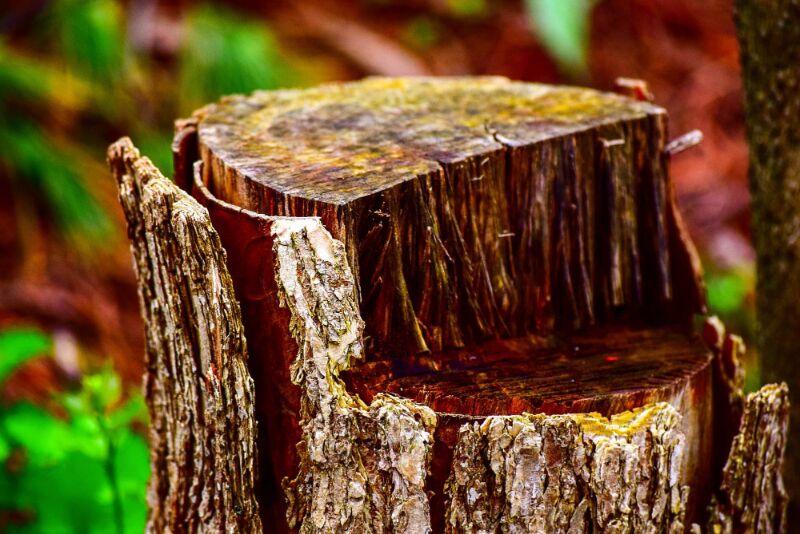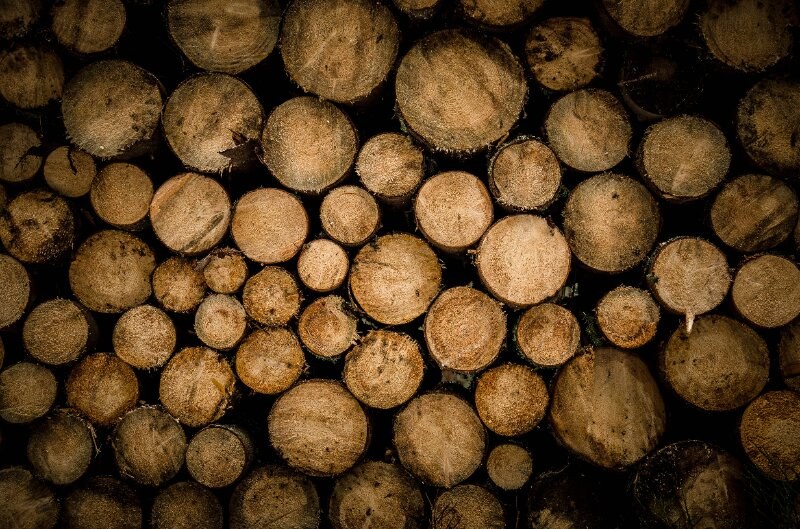The Impact of Stump Removal on the Environment
Reading time: 7 minutesWhen working outside, it's important to consider the environmental consequences of any actions you take. From simple gardening to cutting down entire trees, you need to know the risks and benefits of what you're doing and how it will potentially affect the ecosystem.
Tree stump removal is one outdoor project that requires careful consideration to protect local animals, plants, and people. Here’s what to know about the impact of stump removal on the environment, how to mitigate it, and when to contact a tree care expert for help.

What Is Stump Removal?
Tree stump removal is the process of removing what’s left of a tree after it has been cut down. A tree stump includes the tree's base and its roots underneath the ground. Once a stump has been removed, the ground must be filled and flattened to make room for new vegetation or construction.
Why People Remove Tree Stumps
There are many reasons why you may want to remove a tree stump after the tree has been cut down:
- Tree stumps rot quickly and attract pests and fungi. The stumps decompose rapidly, and the rotting wood creates an ideal environment for fungi and pests to live in. Ants, beetles, and termites are attracted to the scent of decomposition, and once they've exhausted the stump's resources, they'll spread to nearby plants.
- Stumps can sprout new branches and regrow. Tree stumps that are left intact can potentially sprout new branches and start to regrow. These new branches often have an unsightly appearance and require additional removal.
- Tree roots can prevent new construction or landscaping. Tree roots still underneath the stump can extend out where they can disrupt new construction or landscaping. Removal ensures roots won't have the chance to obstruct your space for future projects.
The Environmental Hazards of Stump Removal
Some tree stump removal methods pose a risk to the surrounding ecosystem and should be used carefully or not at all. The most common include:
Tree Stump Poison
Tree stump poison is readily available and is a common way to get rid of stumps quickly. It’s a chemical liquid that, when applied to the freshly cut surface of a tree stump, the stump begins to die almost immediately and prevents it from growing new branches or sprouting from the cuts.
While seemingly convenient, tree poison is made from highly toxic compounds like triclopyr, glyphosate, and potassium nitrate. It may be effective at stopping the tree from growing, but its harmful effects on the environment cannot be overlooked.
For example, Canadian environmental advocacy organization Environmental Defence reports that glyphosate has been linked to blood cancers like non-Hodgkin’s lymphoma, endocrine disruption, and birth defects. When these chemicals leach into the ground, they contaminate widespread areas of soil and water where they can be absorbed by humans, animals, insects, and plants.
Depending on how large a tree stump is, poison may not kill the stump for several weeks. Reapplications may be necessary, putting even more chemicals into the environment and causing harm to surrounding plants.
Burning the Stump
Burning a tree stump is another potential method for removal that offers fast results, but there’s more risk than benefit. Most often, it isn’t allowed in cities or residential areas due to the potential risk of an uncontrolled fire erupting that could destroy homes and businesses.
During Canada’s dry season, burning may not even be a possibility because of the risk of wildfires. Then there’s the smoke and soot that’s released into the environment. Most of the time, the roots are hard to burn due to their moisture content and location deep under the ground.

Mitigating the Effects with Professional Help
For safety reasons, tree poison should only be used by a professional, if at all. Exposure to these harmful chemicals can be catastrophic for kids and pets. You should consider alternative methods like stump grinding or even digging the roots out manually.
While mechanical removal of a tree stump can be challenging, it’s significantly better for the environment. A professional has access to specialized equipment that can quickly cut and grind the stump down to where it no longer causes a problem.
Qualified tree experts also help ensure that the removal of your tree stump has the least impact possible on the local ecosystem. They can advise you on the safest removal methods considering your tree and its proximity to the natural habitats around it.
Frequently Asked Questions (FAQs) About Tree Stump Removal
What is the best way to remove a tree stump?
Manual removal of a tree stump is the most eco-friendly way to get rid of it. Whether this is done with heavy equipment or by hand with shovels, there are fewer consequences to the surrounding environment when stumps are physically removed than if they’re burned or poisoned.
How deep do tree stump roots grow?
Most often, a tree’s primary roots only extend about 16 inches, or a foot and a half, down into the soil. This is shallow enough to plant a new tree if you don’t want to do anything more complicated with the area.
Can’t I just use Epsom salt to get rid of my tree stump?
One popular “folk remedy” for getting rid of tree stumps is by using high concentrations of Epsom salts, often in boiling water. While technically “all natural”, pouring Epsom salts on your tree stump takes a long time to produce results – sometimes up to a full year. Not only is reapplication a chore, but it also causes a buildup of salts in the soil around the stump. This prevents vegetation growth and makes the soil inhospitable to insects for years to come.
Will a tree stump grow back?
A tree stump will eventually start to sprout branches and grow back if the conditions are right. If the conditions aren’t conducive to growth, the stump will usually begin to rot instead. Neither of these outcomes is ideal after stump removal, so it’s a good idea to have a plan in mind of how you’ll get rid of the stump before you cut down your tree.
What’s the difference between stump removal and stump grinding?
Stump removal involves manually pulling out the stump itself, as well as every tree root connected to it. This is difficult and labor-intensive, and generally only needs to be done if you plan on developing some type of in-ground feature.
Stump grinding is easier and doesn't require you to dig up all the roots to get rid of the stump. A stump grinder is a specialized machine that chews away the wood just below the ground, leaving everything underneath the soil intact while preventing regrowth and providing a clean surface above.
This method is usually a cheaper and more effective way to get the job done, but not all stumps can be ground or removed. You’ll need a professional to assess the root system to determine which method is best for your specific tree and location.
What can I put where my tree stump used to be?
There are a few different things you can do with the area of land you have removed a tree stump from, but which options are available to you depends on how you've had the stump removed. For example, if you had the stump ground down but not removed entirely, you couldn’t then put an in-ground pool in that same area. However, there’s important prep to be done first.
If the stump and its roots were removed, and you intend to develop the land over the top of where your tree used to be, you’ll need to fill the hole that removing the stump created. You can do this with soil and plant grass or a garden on the surface.
If you plan to put an in-ground feature, like a pool or fire pit, you’ll need to dig out the area where your stump was in the shape of whatever you plan to do. Then, you can build your feature out as you normally would anywhere else on your property.
If you use a grinder to get rid of just the stump above the surface, you can cover the area with a shallow layer of soil and plant grass on top of it. You won’t want to plant anything with deep roots since the stump still exists underground and acts as a barrier between plants and nutrients within the soil.
Just remember to keep in mind the environmental impact of whatever you’re doing with the land after the stump is removed. Don’t stop at just the ecological consequences of getting rid of your tree stump; continue to use good environmental stewardship as a guideline for what to do next with the same property.
Green Drop Is Your Tree Stump Removal Specialist
At Green Drop, our commitment is to people, plants, and the planet. Our tree stump removal methods are carefully designed to have minimal impact on the local environment while still providing you with excellent results!
Contact us today at 1-877-647-3366 to learn more or book your on-site consultation and removal quote.

